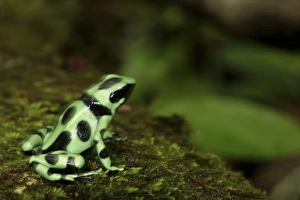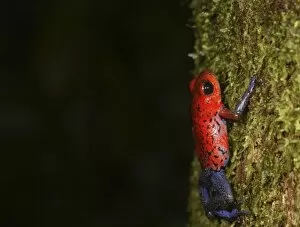Aposematic Coloration Collection
Aposematic coloration is nature's way of warning predators to stay away
All Professionally Made to Order for Quick Shipping
Aposematic coloration is nature's way of warning predators to stay away. In the lush rainforests of La Selva, Costa Rica, two species of poison dart frogs showcase their vibrant hues as a bold statement. The Green & Black poison dart frog (Dendrobates auratus) and the Strawberry Poison-dart frog (Dendrobates pumilio) both call this Central American paradise home. The Green & Black poison dart frog stands out with its striking emerald green body adorned with contrasting black markings. Its vivid colors serve as a clear signal to potential predators that it harbors deadly toxins within its skin. Found in La Selva, Costa Rica, this tiny amphibian uses aposematic coloration to ward off any threats. Meanwhile, the Strawberry Poison-dart frog captivates onlookers with its brilliant red or orange body speckled with black dots. This eye-catching display warns predators that consuming this beautiful creature would be a grave mistake. Like its green counterpart, the Strawberry Poison-dart frog inhabits La Selva and other regions in Central America. But aposematic coloration isn't limited to frogs alone; other creatures have evolved similar defense mechanisms too. Take for instance the South-eastern Lubber Grasshopper found along roadsides and gardens in Costa Rica. This flightless insect exudes a foul-smelling fluid when handled, deterring predators from making it their meal. In North America, the Queen Butterfly showcases aposematic coloration through sexual dimorphism. Males can be distinguished by a distinct black spot on their hindwings while females lack this feature altogether. Inhabiting open areas and meadows from Florida to Kansas in the USA, these butterflies lay their eggs on milkweeds and Oleander plants which render both adults and larvae toxic to potential predators.




